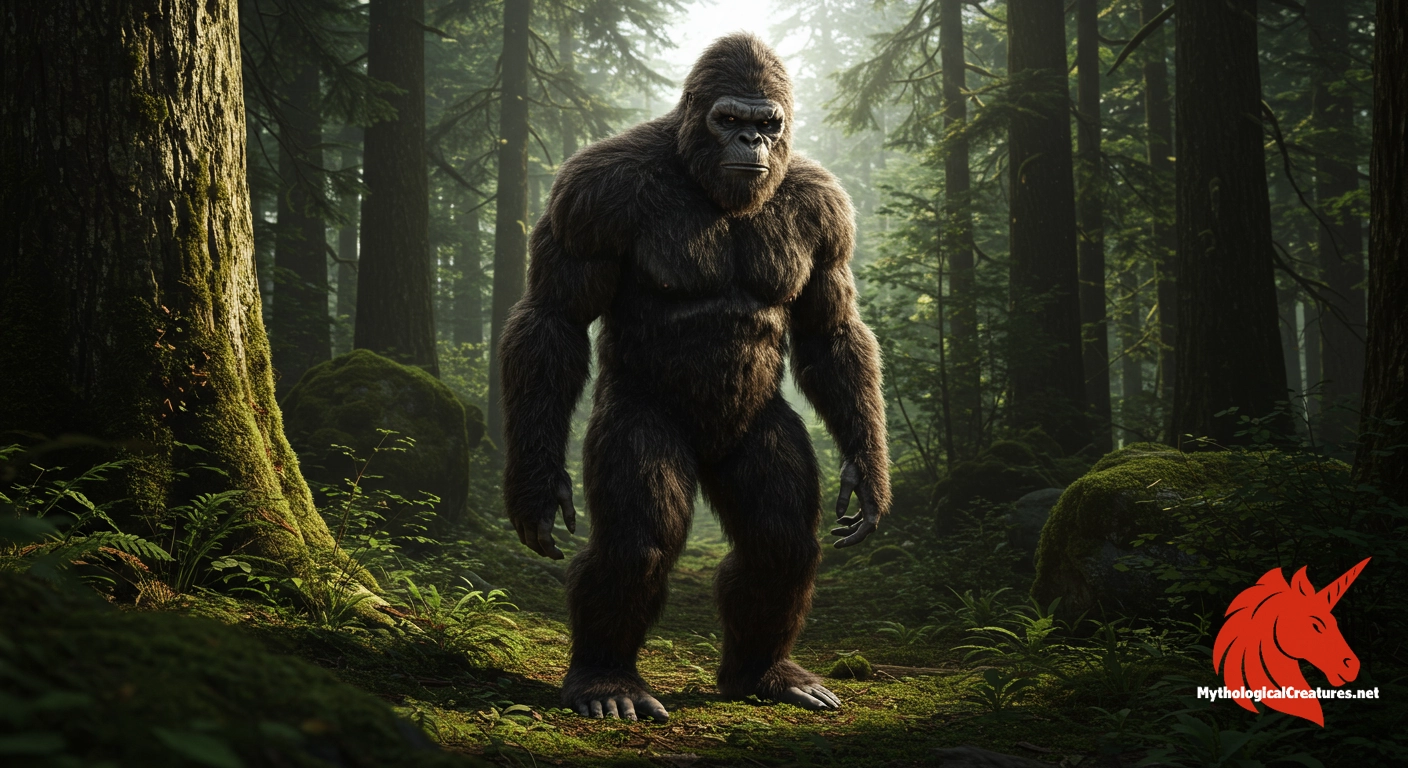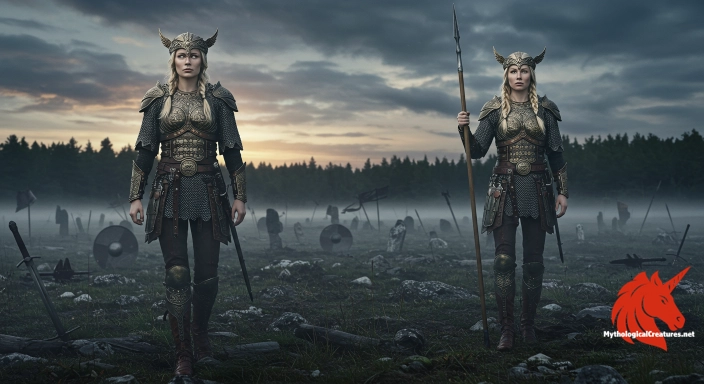Bigfoot: Bigfoot, also known as Sasquatch, is a legendary large, hairy, ape-like creature said to inhabit the forests of North America.

Bigfoot
Bigfoot - Bigfoot is a central figure in cryptozoology, symbolising both the mystery of the wilderness and the interplay between folklore and modern myth.
Origins & First Encounters
Bigfoot, often known as Sasquatch, emerges as one of North America’s most enduring legends, transcending mere myth to become a cultural symbol. Its narrative finds roots in a blend of indigenous oral traditions and the European wild man archetype, weaving an intricate tapestry of historical and spiritual intrigue. Early whispers in secluded communities gradually grew into more detailed tales of a massive, elusive entity moving silently through vast forests. Mid-twentieth-century accounts rekindled interest in this mysterious being, sparking widespread public fascination and media attention. The creature’s myth combines elements of ancient lore with modern storytelling, making its history as multifaceted as it is compelling. Its portrayal as part guardian of the wilderness and part enigmatic force has captivated many and inspired diverse artistic interpretations. The legend is deeply embedded in regional identities, with local narratives enhancing its allure through personal testimony and community lore. Ultimately, Bigfoot symbolizes both the untamed spirit of nature and the perpetual human desire to encounter the unknown.
Source Texts & Tale Variants
Multiple accounts, couched in both age-old oral traditions and modern media reports, have continuously fueled the Bigfoot phenomenon. Consistent reports from remote regions have provided a patchwork of eyewitness testimonies and intriguing artefacts. Blurry photographs, amateur video snippets, and mysterious audio recordings contribute layers of ambiguity to the creature’s elusive profile. Early newspaper clippings and local folktales provided initial glimpses that have since evolved into a rich modern mythology. Indigenous narratives add further depth, intertwining spiritual significance with the raw mystery of an unseen denizen of the woods. A dedicated community of enthusiasts and cryptozoologists compiles and debates these varied pieces of evidence, each report enriching the mythical mosaic. Even when accounts diverge in detail, they collectively underscore the persistent allure and mystery of Bigfoot. In this way, an evolving set of sources and story variants keeps the legend as vibrant today as it was in its earliest retellings.
Form & Powers
Visual depictions of Bigfoot invariably present it as a colossal, bipedal figure cloaked in a mass of shaggy hair. Eyewitness accounts suggest that it rises to a height between seven and ten feet, with a muscular build that hints at both strength and agility. Detailed descriptions often emphasise a broad chest, long powerful arms, and a stride that leaves behind impressively large footprints. Its face, largely obscured by thick hair, is said to possess deep-set eyes that glimmer with an air of ancient mystery. Some narratives even evoke a primitive, almost wolfish visage, further blurring the distinction between man and beast. Variations in the creature’s reported appearance—ranging from dark and brooding to lighter, earth-toned hues—add to the enigma surrounding its true form. Observers recount the texture of its fur as coarse and unkempt, reinforcing its portrayal as an inhabitant of untamed wilderness. The cumulative physical details drawn from diverse sightings form a composite image that is as fascinating as it is difficult to verify.
Regional Faces
While the legend of Bigfoot is firmly rooted in North American lore, its depiction varies significantly across different regions. In the Pacific Northwest, local narratives often cast the creature as a spectral guardian, moving silently through lush, rain-drenched forests. In contrast, sightings in the colder, more rugged terrains of Canada imbue it with a fiercer, survivalist character that resonates with the harsh environment. Southern regions, meanwhile, offer their own twist, sometimes blending Bigfoot’s identity with that of local creatures like the Skunk ape, thereby enriching the tapestry of regional folklore. Rural communities have adapted the myth to suit their cultural and ecological contexts, often imbuing the creature with spiritual or protective qualities. Each locale contributes unique details, from variations in size and appearance to differences in behaviour and perceived intent. The regional adaptations not only highlight the diversity of natural landscapes but also mirror the distinct societal attitudes toward mystery and the unknown. Such localised interpretations reinforce Bigfoot’s status as a multi-dimensional figure, continuously reshaped by the storytellers of each community.
Cultural Parallels
Across diverse cultures, the figure of Bigfoot resonates with an archetype found in numerous global legends of wild, hairy humanoids. Parallels can be drawn between this North American icon and the Himalayan Yeti, the Australian Yowie, and various lesser-known cryptids around the world. These creatures, though separated by vast geographical distances, share strikingly similar themes of mystery, survival, and an almost mythic connection to the wild. In many traditions, they serve as tangible reminders of nature’s untamed and unpredictable character, often inspiring both respect and trepidation. The recurring motif of a large, elusive creature in remote landscapes speaks to a universal human curiosity about the boundaries between civilization and wilderness. Comparative analyses highlight how each culture’s interpretation reflects a deep-seated need to personify the unexplained facets of the natural world. The thematic similarities—ranging from physical appearance to the aura of mystery they exude—underscore a cross-cultural dialogue about the unknown. Such comparisons enhance our understanding of Bigfoot as part of a broader, global narrative about the enduring allure of life on the edge of human comprehension.
Legacy & Modern Evolution
Over time, Bigfoot has evolved from a shadowy figure in remote folklore to a modern icon that pervades popular culture. The mid-twentieth century saw the creature transition from anecdotal local stories to a phenomenon captured on film, in literature, and through a thriving subculture of believers and sceptics alike. Technological advances have spurred a wave of amateur investigations, with enthusiasts employing modern gadgets in their quest for definitive evidence. This shift has transformed Bigfoot into a symbol of the eternal mystery of nature, capturing the collective imagination of several generations. Its image, once confined to whispered campfire tales, now adorns billboards, television documentaries, and even high-profile art installations. The legend continues to inspire not just curious onlookers but also critical debates about the boundaries of myth and reality. The evolution of Bigfoot mirrors broader cultural trends, merging ancient storytelling with contemporary media and scientific inquiry. Today, the creature stands as an emblem of the wild unknown—a reminder of nature’s vast, untamed realms and the timeless allure of mystery.
Interesting Fact
Numerous communities across North America celebrate Bigfoot through festivals and local lore, underscoring the creature’s deep-rooted impact on regional culture and its enduring mystery.
Quick Creature Info
Origin:
Associations:
Our Mythic Legendary Rating:

Also Sometimes Known As:
Habitat:
Supernatural Powers:
Physical Attributes:
Abilities:
Behavior:
Lore:
Related Creatures, Tales or Lore
References
Discover Another Mythical Legend You May Not Have Heard Of?
Uncover the mysteries of ancient folklore and expand your knowledge of legendary beings from cultures around the world.
Dare to Meet the Skögul and Geirskögul....
Mythical Disclaimer: The images and data on this site are derived from various historical and literary sources, but we have found that many myths often have multiple versions and interpretations across references, sometimes contradictory. As a result, these creature depictions are artistic interpretations—imaginative blends of folklore, legend, and a dash of AI guesswork. Because creature descriptions vary widely, our illustrations and accompanying information represent our best effort to honor mythology while bridging creative gaps. Enjoy these interpretations—just remember, we've done our best to respect the stories and validate available data, but in the realm of mythology, details often shift, imagination leads the way, and nothing is ever set in stone!
Curated by the Mythological Creatures Team (rev. May 2025)
